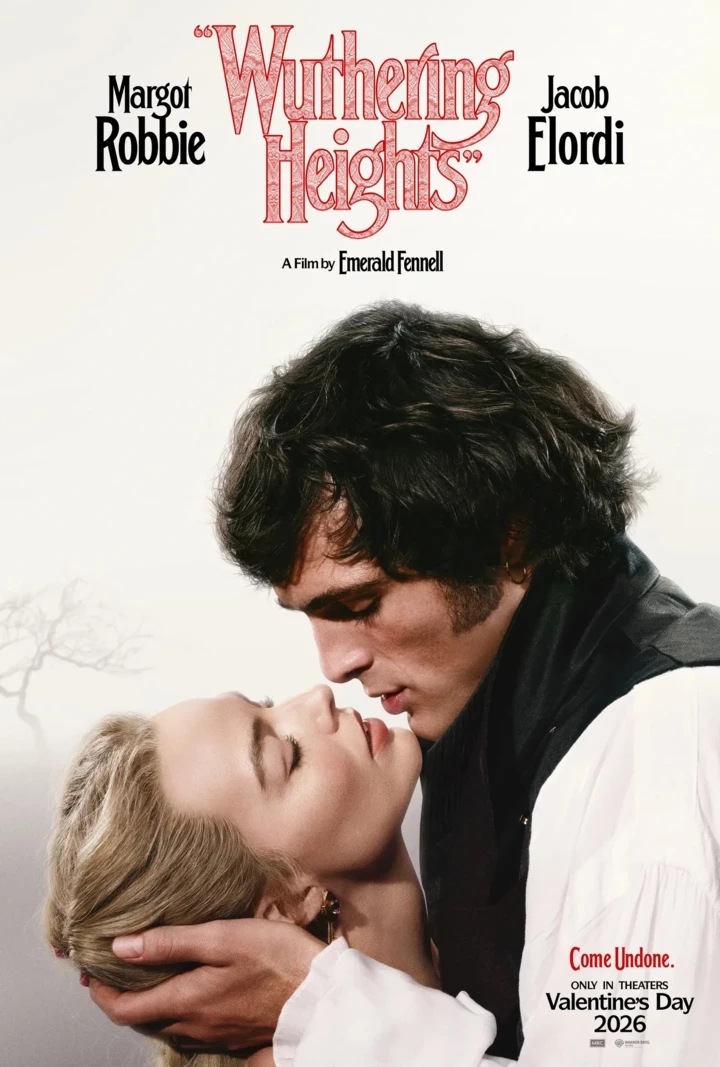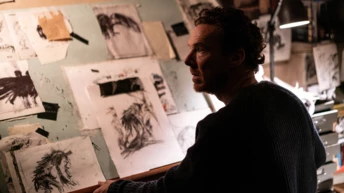
Save this storySave this storySave this storySave this story
It’s been instructive to see “Ballerina,” which opens this week, so soon after the new “Mission: Impossible” installment. In the latter, it’s hard to top Tom Cruise’s intrepid stunt work, which reaches its zenith in a pair of extended sequences (one in a submarine, the other on biplanes), but the story, involving a diabolical scheme using A.I. to commandeer and launch the world’s nuclear weaponry, is a mere pretext. Going to “Mission: Impossible” for the story is like going to Casablanca for the waters. In contrast, “Ballerina”—like the four John Wick films that it’s spun off from—is, strangely, far better at story than at action.
The first John Wick film is the weakest, because the framework for the franchise was still unformed: a retired hit man (Keanu Reeves) gets back into action to respond to a mobster’s attacks. Only a handful of touches—involving the Continental, a luxurious Manhattan hotel-cum-hideout—suggest the world-building mythology that has given the series, at its best, its kicks. The world thus built centers on an international organized-crime and contract-killing syndicate called the Ruska Roma, which has its own complex bureaucracy, elaborate rules, history, and even its own anachronistic technology and design. This world-building energizes the films because, unlike comic-book universes, the Wickiverse has chillingly plausible points of contact with ordinary experience and daily life. Its stakes aren’t asserted but felt.
“Ballerina” extends that legend into new territory, but, in so doing, stretches the matter thin. The new film’s Wick-ed connection is suggested from the start: a girl named Eve Macarro (played as a child by Victoria Comte) witnesses the murder of her father (David Castañeda), himself a killer, by a team of assassins and its a grandiloquent and refined leader, who has accused him of breaking the organization’s rules. Then, the similarly suave Winston (Ian MacShane), the manager of the Continental (who has figured prominently in all four of the John Wick extravaganzas) takes the orphaned child (whose mother had previously been killed) under his wing, bringing her into a so-called family. A dozen years later, that home is revealed to be a grandiose Ruska Roma residence where Eve (played as an adult by Ana de Armas) is studying ballet under the strict tutelage of the organization’s Director (Anjelica Huston) and mastering the deadly arts under a series of teachers likewise under the Director’s rule.
Readied for her hit-woman career, Eve is sent to protect a young woman from kidnapping. The resulting set piece has a calculated air of cool—indeed, of cold, being set in a night club where the dance floor is icy—and it results in a carnival of death and grotesque injury. In the process, Eve sees a scar on a dead henchman’s wrist that reminds her of one of her father’s killers, and—dumping the limb, severed, on the Director’s desk—demands information. The Director informs her that the scar is the mark of a rival group of killers with which the Ruska Roma maintains a permanent mutual pact of nonaggression, and orders Eve to stand down. The group—referred to as a tribe—is said to outdo the Ruska Roma in its ruthlessness, but Eve is not to be deterred. With information from Winston, she heads to Prague in pursuit of her father’s killer. There, mayhem ensues. Defying her handlers, she tracks the group to an Austrian mountain village called Hallstatt, which becomes the site of yet more mayhem.
“Ballerina” is officially an offshoot of “John Wick 3: Parabellum,” which is to say that its story is firmly ensconced in the cycle’s Ruska Roma mythology. There’s something dubious about this mythology—why has a real-life, much oppressed ethnicity been made cinematically synonymous with a league of contract killers?—but its development, nonetheless, has been engrossing by dint of its complexity. The Continental isn’t just one hotel—it’s an international chain, all under Ruska Roma rule, and the hotels’ extremes of luxury and rarefied service almost become characters in themselves, potent incarnations of the corporatized power of murder. (The deadly ways of plutocratic power are also concealed behind the elegance of high culture, as the very title of “Ballerina” and its protagonist’s early training suggest.) The veneer of frictionless welcomes and lofty manners, of fine furnishings and cossetting comforts, suggests an impersonal mechanism of deadly decision-making that conceals itself under contractual responsibilities and rules-based procedures. Winston’s mantra is that one always has a choice, but the entire mechanism of the Ruska Roma is anchored in a quasi-military order that obliterates choice and in which consequences are automatic.
The choices that do exist come in the gray zone of danger, the shadowy margins of mandated action—the equivalent of instant battlefield improvisations under fire. These quietly decisive moments on which the mega-battles depend provide the series with the closest thing it has to intimacy. What gives them their narrative charge is the greatest dramatic inspiration of the series—the Ruska Roma’s paranoia-stoking surveillance regime. Although the bureaucracy of the Ruska Roma follows ancient traditions and runs on old-fashioned analog technology (including a switchboard and pneumatic tubes), its power involves a network of secret agents who are seemingly ubiquitous, not only melting undetectably into crowds but even forming some of those seemingly ordinary crowds.
In “Ballerina,” such chilling excitements figure only glancingly, as when hotel guests and townspeople are enmeshed in the tumult. The new movie’s emphasis lies elsewhere: in the establishment of the character of Eve and her confirmation as an action heroine. As if to give Eve battle cred, “Ballerina” plays at times like weapon porn, the camera rapturously gazing at her armamentarium, which includes a wide variety of high-tech firearms along with hand grenades and flamethrowers, and which yields a high degree of gore. The movie, with its more primal sense of violence, also evokes a more primal sense of belonging: in lieu of previous installments’ elaborate quasi-feudal negotiations of the intersyndicate council the High Table, “Ballerina” offers various and sentimental visions of family bonds that take surprising forms.
“Ballerina” is the first movie in the series that’s not directed by the franchise co-creator Chad Stahelski (who’s a former stunt performer); it’s directed by Len Wiseman (with some reshoots by Stahelski), but its action scenes are no less elaborate than those of its predecessors. Yet, though action scenes are the crux of the cycle, they have rarely been more than functional, and that largely holds true in “Ballerina,” too. In the John Wick films, Reeves has become an accomplished actioneer, but the role fits him like a costume, not like a second skin, and that’s equally true of de Armas, who is a purposeful and determined presence nonetheless, in a role that is written to stint on characterization and makes charisma count more than performance. The action sequences in all five films feel more designed than performed, and it’s notable that the most engrossing fight scenes in the series are the ones featuring Donnie Yen, in “John Wick: Chapter 4,” because Yen is a veteran martial-arts actor (and director), and because the role he plays there—a blind assassin—has a theatrical lilt that inflects his performance. Still, direction counts, too, and here it’s rarely at the level of the onscreen exertions that it captures. In “Ballerina,” a single wide shot of Eve, gyrating in silhouette in front of a raging fire as she hacks up a half-dozen assailants with a long sword that she found on site, has more cinematic identity and kinetic delight than the rest of the movie.
If the Wick films rarely supply the spectacular thrills of the “Mission: Impossible” ones, it’s worth noting that both series—and, for that matter, the James Bond franchise—lack a key ingredient of tension. What they are missing is airports, passport controls, luggage and customs, taxis and restaurants and pharmacies, and all the other workaday complications of international flitting-about that would make the movies’ preternaturally gifted but all-too-human superheroes stand out more dramatically from more modest members of the species. That’s why genre films get no respect: not because they’re gaudily sensational but because they’re missing the practicalities that can make impossibilities seem all the more impressive, missing the ordinariness that would give their wondrous characters detailed definition. The John Wick quintet is better than “Anora” at conjuring the velvet-gloved menace of the international oligarchy—but “Anora” has the airplane. ♦
Sourse: newyorker.com







